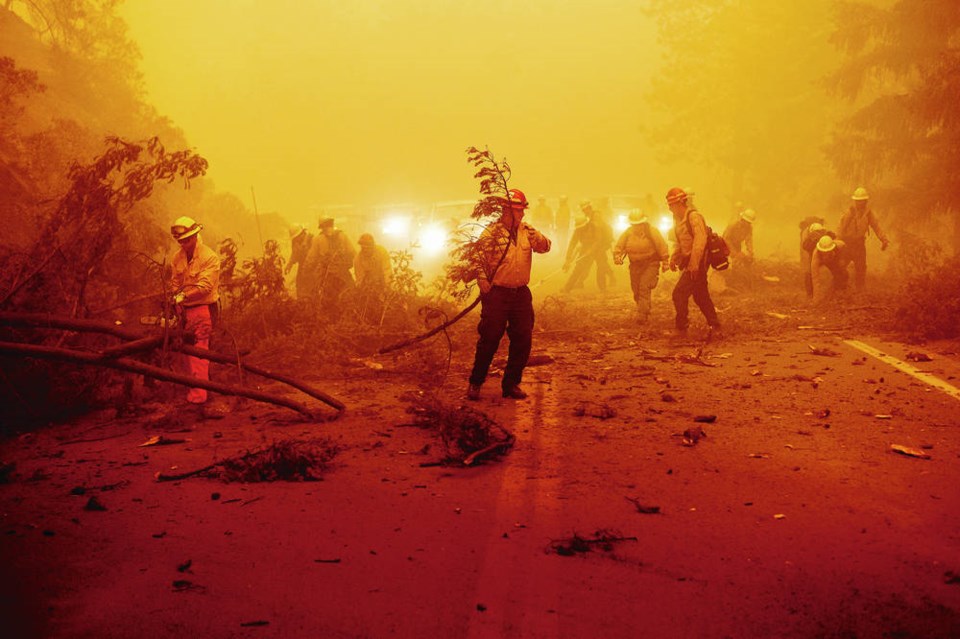An important new report from the Intergovernmental Panel on Climate Change states bluntly: “Climate change is widespread, rapid and intensifying.” Panmao Zhai, the co-chair of the working group that produced the report, said we need “strong, rapid, and sustained reductions in greenhouse gas [GHG] emissions, and reaching net zero CO2 emissions.”
There are two ways to achieve net zero: Reduce GHG emissions (principally carbon dioxide, but also methane, nitrous oxides and other gases) or increase the absorption of these gases — primarily carbon dioxide — in natural or human-engineered “sinks.”
In reality, we need both.
Natural sinks are described by the Council of Canadian Academies, currently undertaking an assessment of the potential of Canada’s carbon sinks for Environment and Climate Change Canada, as “natural systems — plants, soils, aquatic and marine environments — that absorb more carbon from the atmosphere than they release.”
Therein lies their value, and hence their interest for Environment and Climate Change Canada. What if we could expand the ability of these natural sinks to absorb carbon, keeping it out of the atmosphere?
The problem is that the ability of the main sinks to absorb more carbon is in doubt. In fact, far from the sinks helping us, they may become sources of GHG as a result of human interference, poor management and climate change — which is itself human-induced.
So as climate change impairs the sinks, it worsens climate change.
One example of this is very apparent in B.C. and around the word today — forest fires and other forms of deforestation. Globally, a 2017 study published in Science reported that the world’s tropical forests are now a source of carbon, primarily due to deforestation and degradation or disturbance of natural forests.
They emitted more than 400 million tonnes of carbon annually, equivalent to about 1,500 million tonnes (or 1.5 billion tonnes) of carbon dioxide. Considering total human emissions of carbon dioxide are about 36 billion tonnes, we can see this is a significant problem.
A paper published last month in Nature, titled “Amazonia as a carbon source linked to deforestation and climate change,” found that, far from being an important carbon sink, as it once was, the Amazon’s ability to absorb carbon is in decline. In fact, the paper found the Amazon has become a carbon source in its southeastern regions due to “the intensification of the dry season and an increase in deforestation.”
Here in B.C., our forests, which used to be important carbon sinks, are now huge carbon emitters.
In a July 5 article in the National Observer, using data from B.C.’s official greenhouse gas inventory, Barry Saxifrage found that on average in the 1990s, the forest absorbed 84 MtCO2 (millions of tonnes of carbon dioxide), while on average each year in the 2010s, the forest emitted 39 MtCO2. This large shift, he found, has two main causes: the massive increases in wildfires and, at the same time, a decline in absorption of carbon dioxide via forest growth.
So B.C. was on average worse off by 123 MtCO2 annually in the 2010s compared with the 1990s. In fact, in 2018 wildfires led to almost 200 MtCO2 of emissions. Considering that B.C.’s human-created GHG emissions in 2018 (the latest year for which data is available) were 67.9 of MtCO2, this is obviously a huge problem, and one we must reverse.
Forests are not the only natural sinks where we have problems. Current land use and agricultural practices — and the high-meat diets that drive them — make plants and soils major emitters.
But Drawdown, an organization working on carbon reduction, lists 22 different interventions that could make land use a major sink, absorbing many times the amount of carbon we emit today.
But it will require major social changes across many societies, including “ecosystem protection and restoration, improved agriculture practices and prudent use of degraded land” as well as “reducing food waste and shifting to plant-rich diets.”
If we lose our major sinks — if they become major sources of GHG emissions — we are sunk. But if we can mobilize globally and locally to protect and manage our carbon sinks, we might yet manage a smart transition to a net-zero future.
Dr. Trevor Hancock is a retired professor and senior scholar at the University of Victoria’s School of Public Health and Social Policy.



